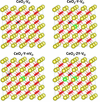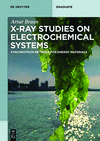issue contents
September 2018 issue

Cover illustration: High-temperature measurement of the phonon density of states of a mineral by nuclear resonant inelastic X-ray scattering at sector 3ID of the Advanced Photon Source, Argonne National Laboratory (see Dauphas, Hu, Baker, Hu, Tissot, Alp, Roskosz, Zhao, Bi, Liu, Lin, Nie and Heard, pages 1581-1599). Photo credit: F. Tissot.
facility information
feature articles
Open  access
access
 access
accessThe PETRA IV project aims at upgrading PETRA III into an ultralow-emittance synchrotron radiation source.
Open  access
access
 access
accessCommissioning and first-year operational results of the MAX IV 3 GeV electron storage ring, the first synchrotron light source to make use of the multibend-achromat lattice to achieve ultralow emittance and high brightness, are presented.
research papers
Open  access
access
 access
accessSwitching of the harmonic order in free-electron laser oscillations by adjusting the dispersive gap of the optical klystron is demonstrated.
The compatibility of sub-picosecond-long photon pulse production with multi-bunch, multi-user operation of synchrotron light sources, and in particular with diffraction limit electron optics designs in the next storage rings generation, is investigated. An alternative method for the time-compression of electron bunches, which is transparent to storage rings operation, is illustrated.
The advent of `diffraction-limited' storage rings with ultralow emittance poses a question on possible limitations to the (spectral) brightness and coherence due to the electron beam energy spread. This is studied here using semi-analytical techniques.
The sagittal-bent Laue crystal profile is characterized by optical metrology and synchrotron X-ray experiments. On-line X-ray experiments provide a quick feedback on the crystal-profile adjustment.
Open  access
access
 access
accessA coherence-preserving harmonic-rejection scheme based on parallel crystal optics that achieves a total flux ratio of harmonic radiation to fundamental radiation on the order of 10−10 or lower is reported.
Open  access
access
 access
accessThe design and first measurements with a high-speed piezo-positioner-based goniometer for raster-scanning serial macromolecular micro-focus crystallography at synchrotron storage rings are presented.
Open  access
access
 access
accessThe capabilities of the new long duration experiment facility at Diamond Light Source are demonstrated through a study of phase evolution in Cr–Co–Ni alloys using in situ X-ray diffraction.
A protocol is proposed for classifying structure models of proteins restored by ab initio analyses in small-angle X-ray scattering.
Open  access
access
 access
accessHigh temporally and spatially resolved operando studies of CO oxidation using a Pd(100) single-crystal surface as a model catalyst are presented. The surface structure is determined simultaneously as the gas phase is visualized in two dimensions in the vicinity of the catalyst surface.
An alternative defect engineering approach has been developed that is based on the effects of radiation damage caused by synchrotron X-ray irradiation.
The induced magnetic moment at Mo atoms in CoMo alloy (reference) and Co/Mo layered systems is investigated by X-ray magnetic circular dichroism. A possible role of this moment in antiparallel coupling of the Co layers' magnetization in the Co/Mo system is discussed.
Sub-microsecond-resolved multispeckle XPCS spanning nearly eight orders of magnitude in delay times is demonstrated using the UFXC32k area detector in a combination of burst and continuous data acquisition modes.
Pd/Y multilayers with B4C barrier layers are characterized using grazing-incident X-ray reflectometry and X-ray standing wave enhanced hard X-ray photoelectron spectroscopy.
The development and commissioning of an experimental set-up for studying photophysics and photochemistry of molecules in matrix isolation and the ice phase at low temperatures at the Photophysics beamline, Indus-1, Indian synchrotron radiation source, are reported.
A new procedure has been developed that determines the complex refractive index of a material in the soft X-ray regime by consistently considering simultaneous measurements of electron yield and reflectance. Demonstrating the efficacy of this procedure in its application to graphite, optical constants have been determined for linearly polarized light incident with p- and s-geometry.
Open  access
access
 access
accessA scanning soft X-ray microscope for magnetic imaging using an 8 T superconducting magnet, installed at BL25SU, SPring-8, is described. With the instrument the magnetic domain structure of an Nd–Fe–B sintered magnet is demonstrated.
A novel iterative image reconstruction algorithm for in-line X-ray phase-contrast computed tomography (IL-PCCT) is presented, which has the potential to reduce the radiation dose while maintaining the high quality of reconstructed images in IL-PCCT.
This proof-of-concept study demonstrates that in-line propagation-based phase-contrast computed tomography of fresh tissues and complete breast specimens can be performed. High-quality images can be obtained using an X-ray dose low enough to allow for a future application in patients, while providing a more accurate characterization of the clinical picture.
Open  access
access
 access
accessThe high-speed synchrotron X-ray imaging technique was synchronized with a custom-built laser-melting setup to capture the dynamics of laser powder-bed fusion processes in situ. Various significant phenomena, including vapor-depression and melt-pool dynamics and powder-spatter ejection, were captured with high spatial and temporal resolution.
Open  access
access
 access
accessAn approach is demonstrated termed Tomosaic for tomographic imaging of large samples that extend beyond the illumination field of view of an X-ray imaging system.
NEUTRON | SYNCHROTRON
Open  access
access
 access
accessThe fluence and dose requirements as well as the expected contrast are calculated for X-ray imaging of selected cellular components as a function of photon energy. It is found that a much higher dose is required for phase contrast imaging compared with absorption contrast imaging in the water window.
short communications
A setup for time-resolved in situ tomography with up to 25 tomograms s−1 is implemented at the EDDI beamline, BESSY II, Germany. The capabilities of the methods are demonstrated by analysing the foaming behaviour of a metallic foam granulate.
A successful test of an on-chip THz spectrometer that allows measurement of THz fingerprints for the purpose of bunch compression diagnostics is reported.
Open  access
access
 access
accessRefractive lenses are used to vary the focal spot size for a Kirkpatrick–Baez X-ray microprobe.
beamlines
Open  access
access
 access
accessIn order to probe the complex dynamics of light–matter interaction on all relevant time scales, a multilayer-mirror-based long-range split-and-delay unit was installed as a part of the CAMP end-station at the FLASH free-electron laser in Hamburg.
Open  access
access
 access
accessBeamline BL1 at the FLASH free-electron laser facility at DESY was upgraded with new transport and focusing optics for the installation of the new permanent CAMP end-station, a multi-purpose instrument optimized for electron- and ion-spectroscopy, imaging and pump–probe experiments. An overview of the layout, beam transport, focusing capabilities, and experimental possibilities of this new end-station, as well as results from its commissioning and first experiments, are presented.
The HAXPES beamline PES-BL14 installed at the bending-magnet port at the Indian synchrotron, Indus-2, is presented.
The design objectives and operational challenges of a wide-beam and high-power-load, in-vacuum, DCLM monochromator are described.
Open  access
access
 access
accessA scanning four-bounce monochromator that offers an unprecedented level of stability in the incident beam energy resolution and calibration has been developed for a flagship spectroscopy beamline at Diamond Light Source.
Open  access
access
 access
accessA new large-range rapid-scan X-ray fluorescence (XRF) imaging station at the Stanford Synchrotron Radiation Lightsource is described. This station uses a continuous rapid-scan system with a scan range of 1000 × 600 mm and a load capacity of up to 25 kg, capable of 25–100 µm precision for elemental XRF mapping and X-ray absorption spectroscopy of a wide range of objects.
computer programs
Open  access
access
 access
accessA description of the Data Management System developed at the Advanced Photon Source is given.
Open  access
access
 access
accessSciPhon is a software for the reduction of nuclear resonant inelastic X-ray scattering data. Tests and examples of applications to Fe, Kr, Sn, Eu and Dy data are presented.
The CTM4XAS software package is extended to simulate the M- and L-edge X-ray absorption spectra of metal-centered excited states of first-row transition metals. The new capabilities of the method are demonstrated by re-interpreting two previous experimental studies.
book reviews
Free 



 journal menu
journal menu




























































